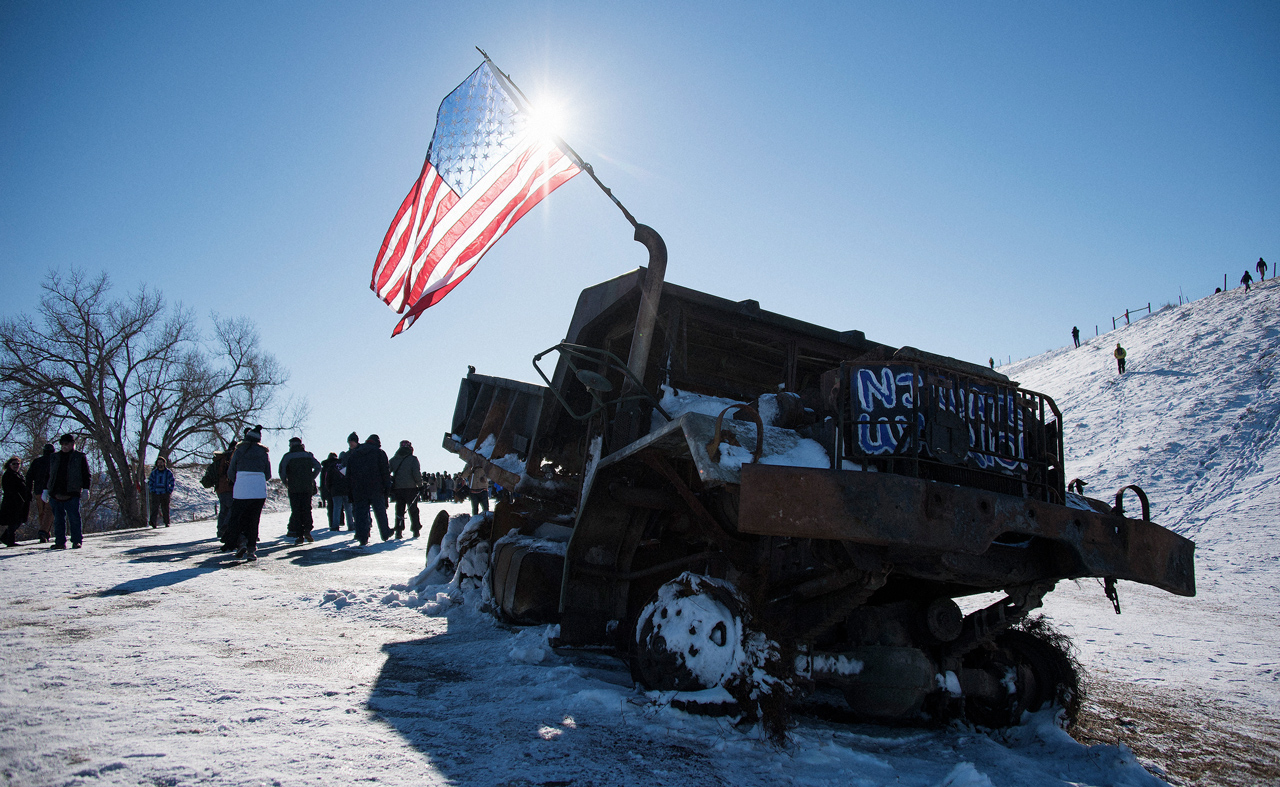WHILE EYES WERE ON STANDING ROCK, THE DAKOTA PIPELINE WAS BEING DRILLED UNDER ANOTHER WATER SOURCE
While the pipeline may have been halted in North Dakota, construction workers just finished drilling under the Des Moines River, which supplies the water for half a million people in Iowa.

Last Friday, while the media focused on the thousands of protestors at Standing Rock, a construction crew working on the same under-protest project finished drilling through rock under the Des Moines River in Iowa—another major source of drinking water.
The pipeline crosses the river near the tiny community of Pilot Mound, Iowa. But the river supplies water not only to nearby small towns and farms, but also to Des Moines Water Works, which serves around half a million people in and near Des Moines.
In Bismarck, the capital of North Dakota, the $3.8 billion pipeline was rerouted—without the need for protests—because it risked the drinking water supply for around 67,000 people who live there. Federal rules for pipeline location are stricter for higher-population areas, while low-population areas don’t get the same protections.
“Bismarck qualified for the extra protections, Standing Rock did not, nor did the crossing at the Des Moines River,” says Carolyn Raffensperger, an attorney and executive director for the Iowa-based Science and Environmental Health Network. “The nearest town to the Des Moines River crossing, even though [the river] is the source of Des Moines’s drinking water, is Pilot Mound, Iowa, which is five blocks long.”

Protestors in Iowa fought against the pipeline construction for months, as they have in North Dakota, with some of the same protestors going back and forth between locations. “The resistance in Iowa has been as ferocious, in some ways,” says Raffensperger, who was also the first attorney on the ground at Standing Rock. “Not as visible. We’ve had well over 400 arrestees. Between Standing Rock and Iowa, we’ve had over 1,000 arrestees.”
The 1,170-mile pipeline, which crosses four states, is designed to carry about half a million barrels of oil a day from the Bakken oil fields in North Dakota to Illinois. Sunoco Logistics, the company that plans to operate the pipeline, has had 274 hazardous leaks and spills in the past decade—more than any other company. In October, one of the company’s pipelines burst in Pennsylvania, spilling 55,000 gallons of oil into a river that supplies drinking water to 6 million people.
Landowners in Iowa are suing the Iowa Utilities Board for granting the permit, in part because they argue that the Board didn’t have the authority to take the land through eminent domain. One of the other issues at stake: The Utilities Board required the parent companies behind the pipeline prove that they have the funds to clean up a spill, and Sunoco Logistics hasn’t provided that proof. The lawsuit goes to court on December 15.
In its 2015 annual report, Energy Transfer Partners, the main company behind the pipeline, says that it may not be able to pay for cleanup even for spills in pipelines that are already in use: “Accordingly, we cannot assure you that our current reserves are adequate to cover all future liabilities, even for currently known contamination.”
The fate of the Dakota Access Pipeline is still unclear. On Sunday, the Army Corps of Engineers announced that it wouldn’t grant an easement needed to let the pipeline pass under Lake Oahe near the Standing Rock Sioux reservation—and that alternative paths need environmental impact statements, which take time to prepare. The delays, and other financial pressures, could possibly jeopardize the project. The Standing Rock tribe also still has a pending lawsuit. But even if the route bypasses Standing Rock, the larger project may still continue, and oil could eventually start flowing through the new pipeline in Iowa.
Beginning on December 1, continuing early into the morning on December 2, construction workers drilled through the river three times, after hitting the wrong spot twice. “Finally they got it done, and pulled the pipe through,” says Raffensperger. “I think it took about 12 hours to pull the pipe through. And we stood there in the rain and protested, and defended water, and cried.”







Follow Us!